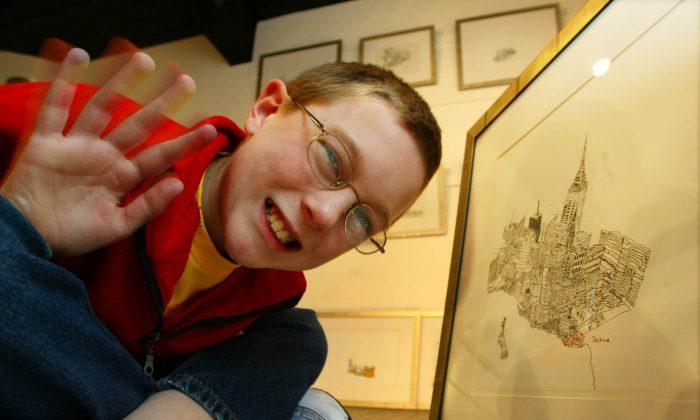Autism is commonly, if mistakenly, associated more with logical thinking than creative expression. But new research suggests we might need to rethink our views on creativity and autism.
The criteria we use to diagnose autism have long made reference to the fact that autistic imagination appears to be limited, and this trait is used as a way of detecting the condition. Yet in reality, we still see many extremely creative autistic people.
This paradox led researchers at the universities of East Anglia and Stirling to study creativity and autistic traits in a large group of both autistic and nonautistic individuals. Their tests of creativity involved coming up with as many innovative uses for common objects or interpretations of vague pictures as they could in one minute. The total number of suggestions was recorded, and they were rated on how unusual they were.
The authors found that individuals with higher levels of autistic traits made fewer suggestions than those with lower levels of autistic traits. Surprisingly, however, the suggestions from those with higher levels of traits had greater originality. It seems that being on the autistic spectrum is associated with being able to generate suggestions that were more creative.
Autism and Ability

Why is this particularly interesting? Given the plethora of reports of autistic difficulties and deficits, I always think that research on the strengths of autism is important. But this finding is intriguing because, even when considering autistic talents and ability, it doesn’t quite fit with the stereotypical view of the mathematically minded autistic genius who lacks flexibility of thought and imagination.
Much research on autistic people recognizes areas of ability in mathematics, data processing, and IT, where a logical, systematic method is required.
Autistic people tend to be superior to nonautistic people in many tasks that require processing large amounts of information, picking out details of objects or scenes, or detecting changes in the environment. All of these require good adherence to rules, a focus on detail and a methodical approach. This seems to be at odds with how we view creativity and creative people.
Does the new study challenge this generalization? Not quite yet. Participants were specifically asked to generate novel uses for items: The creativity was prompted, rather than spontaneous. On tests of spontaneous creativity, the level of imaginative use is lower in autistic participants. For example, this tends to be the case on diagnostic measures such as the Autism Diagnostic Observational Schedule where individuals are asked to create stories using various items, but are not given instructions about whether to use the items in their typical manner.
This can also be seen with other autistic traits. For example, when given free choice, autistic people will process the local components in preference to the global shape. Yet, when instructed to process the whole form instead, they are perfectly able to do so.
Perhaps the new research has revealed that even if imagination and creativity may be reduced in autism in some situations, when specifically asked to generate novel ideas, autistic people are even more adept than those without autism.
The authors suggest that the reason for this increased ability may be down to differences in how language is processed in the brains of autistic people. One alternative—and more optimistic—possibility, is that autistic people might be less constrained by social norms.
In nonautistic individuals, the pressures of expectation and compliance with group behavior may get in the way of creativity, preventing some of the more unusual ideas. In addition, there is work that suggests autistic people are less influenced by their prior knowledge or experience when performing a task. Freedom from all these influences and pressures might allow more unusual ideas to form.
Busting Stereotypes
When we look further, there are actually numerous examples of creativity in autism. There are many examples of great autistic artists, musicians, actors, poets, and writers. In some cases, this creativity seems to go hand in hand with the more traditional talents, leading to incredibly detailed and accurate drawings or the ability to play a concerto after hearing it only once.
In research, as well as in society, we seem to have tunnel vision when perceiving and interpreting autistic behavior. The recent findings, together with the many examples of creative autistic people in books, films, and on the Web suggest that we need to avoid getting stuck in a particular way of thinking about autism.
So let’s stereotype less and embrace individuality, encouraging and nurturing ability even in areas that might not come naturally. As autism activist Temple Grandin has said, “The most interesting people you'll find are ones that don’t fit into your average cardboard box.” Perhaps autistic people are also the ones who truly think outside the box.![]()
Anna Remington is a lecturer in cognitive science at the University College London. This article was originally published on The Conversation.


Friends Read Free